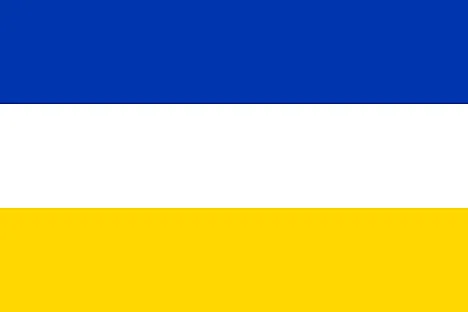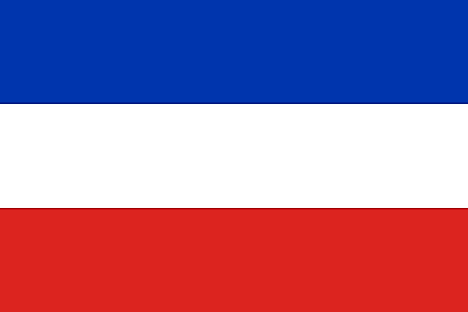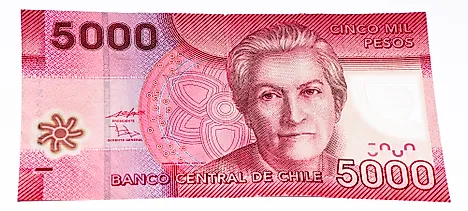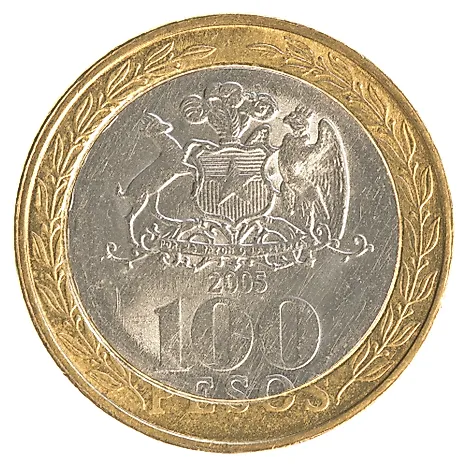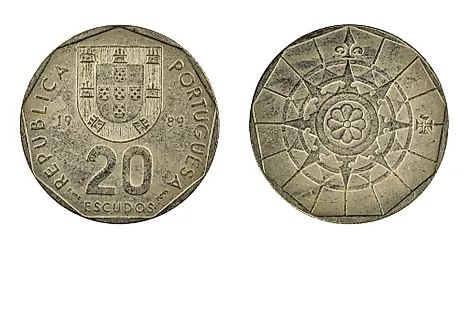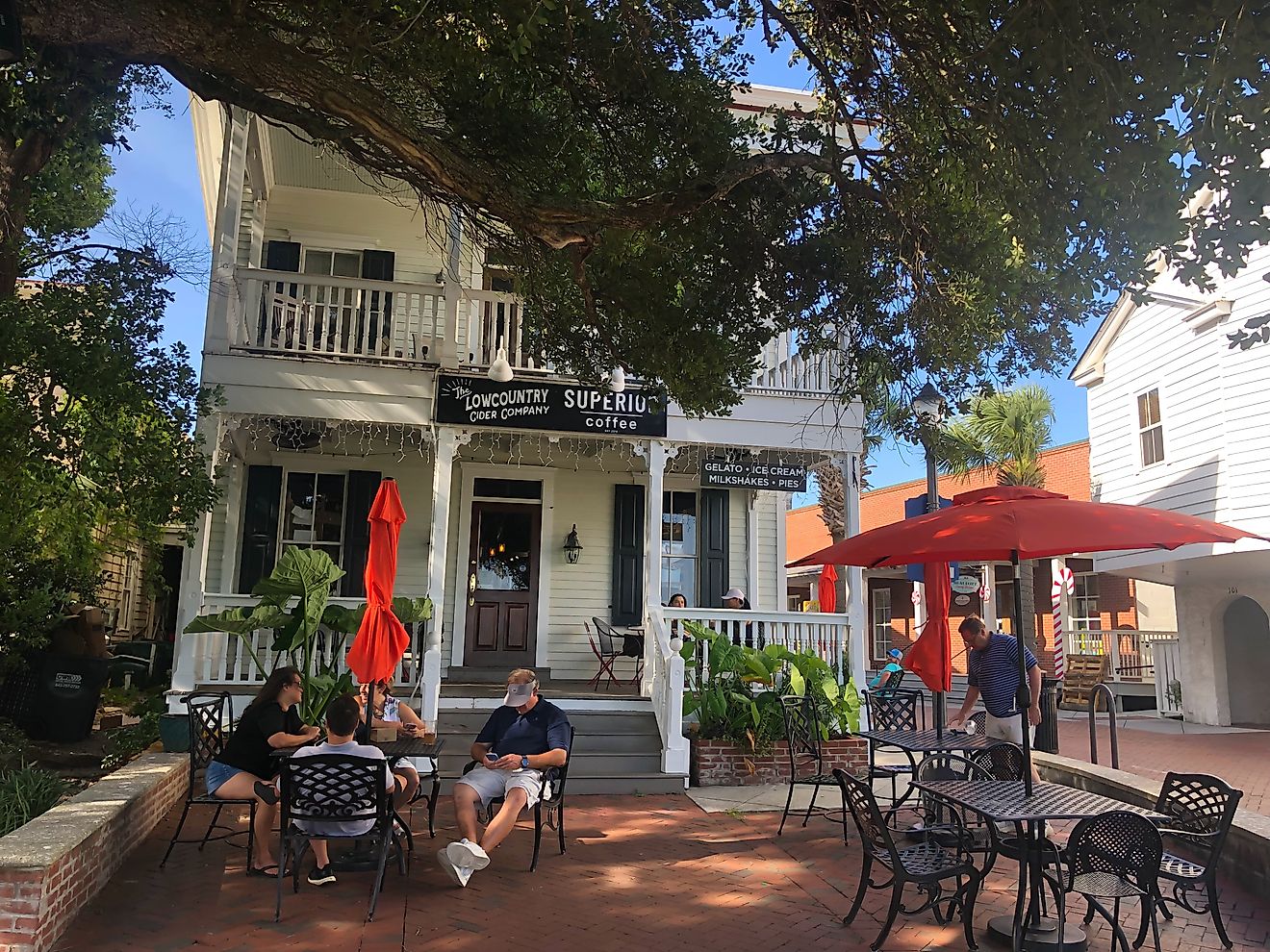Flags, Symbols & Currency of Chile
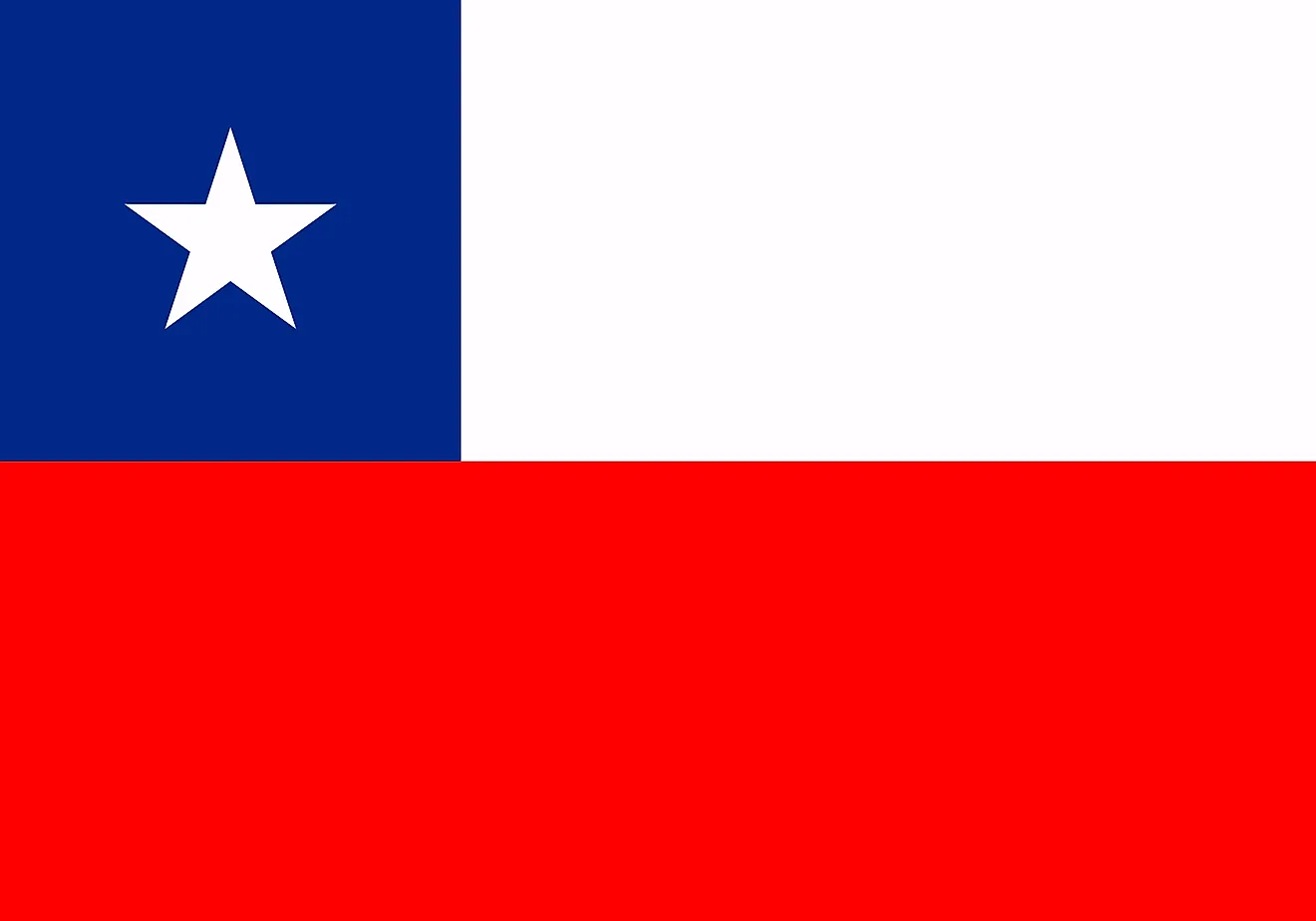
The current National Flag of Chile was officially adopted on October 18, 1817. The flag is modeled after the U.S. Stars and Stripes; and has been designed by Antonio Arcos and supported by Minister of War, Jose Ignacio Zenteno.
The National Flag of Chile features two equal horizontal bands of white (top) and red; with a blue square band of the same height as the white band positioned at the hoist-side end of the white band. This blue square band bears a white five-pointed star in the center. The blue color of the band represents the high-mountain sky and the Pacific Ocean. The white color represents the snow-covered Andes mountains. The red color symbolizes the bloodshed by the Chileans during the long struggle for independence from Spain. The white five-pointed star represents a guide to progress and honor. The flag has a width-to-length proportion ratio of 2:3.
History of the Flag of Chile
Chile used the Spanish flag when it was a Spanish colony, but abandoned the flag as soon as Chile achieved independence. The new nation adopted the Flag of the Transition after the Battle of Chacabuco in 1812, which was a triband with blue, white, and red stripes. Although the flag was well received by Chileans, it could not be used in official matters because it resembled the flags of both the Netherlands and France. As a result, the flag was receded five months later. The original version of the flag had a slightly tilted star, with a smaller eight-pointed star at the center, as well as a coat of arms in the middle of the flag. The use of the star can be traced back to the native Mapuche people during the Arauco War. However, the design proved to be challenging to construct, and consequentially, the asterisk and the coat of arms were removed. A new government that took over replaced the Flag of Transition with the current official flag of Chile.
Symbols of Chile
The National Coat of Arms of Chile

The original version of the National Coat of Arms of Chile was designed by Charles Wood Taylor – an English artist and was adopted on June 26, 1834. The current version of the Coat of Arms was adopted on December 12, 1967. It is made up of a figurative background which is divided into two equal parts: the top one is blue and the bottom one is red. In the center of the shield is a five-pointed white star. On the right side of the background is an Andean Condor which is the most significant bird of prey. On the left side of the background is a huemul - which is the most singular and rare mammal of the Chilean territory. Both animals have the navy's golden crown on their heads, which is a symbol of the heroic deeds of the Chilean Navy in the Pacific Ocean. Atop the shield stands three feathered crests; each feather bearing one color: blue, white, and red. This feathered crest was a symbol of distinction that former Presidents of the Republic used to wear on their hats. Underneath the coat of arms, there is a white band with the motto: "Por la Razón o la Fuerza" ("By reason or by force").
National Motto
"Por la Razón o la Fuerza." (“By reason or by force”)
National Anthem
- Anthem Title: "Himno Nacional de Chile"
- Music Composer: Ramón Carnicer
- Lyricist: Eusebio Lillo
- Date of Adoption: December 23, 1828 (music); September 17, 1847 (lyrics)
"Himno Nacional de Chile" is the national anthem of Chile. The music of the current official version of the national anthem was composd by Ramón Carnicer and the lyrics has been authored by Eusebio Lillo. The chorus and the fifth verse of the original anthem together make up the official national anthem that is played nowadays. The music of the anthem was adopted on December 23, 1828 and the lyrics was officially adopted on September 17, 1847.
"Himno Nacional de Chile" (Spanish)
Puro, Chile, es tu cielo azulado.
Puras brisas te cruzan también.
Y tu campo de flores bordado
Es la copia feliz del Edén.
Majestuosa es la blanca montaña
Que te dio por baluarte el Señor
Que te dio por baluarte el Señor,
Y ese mar que tranquilo te baña
Te promete futuro esplendor
Y ese mar que tranquilo te baña
Te promete futuro esplendor.
Coro:
Dulce Patria, recibe los votos
Con que Chile en tus aras juró:
Que o la tumba serás de los libres
O el asilo contra la opresión
Que o la tumba serás de los libres
O el asilo contra la opresión
Que o la tumba serás de los libres
O el asilo contra la opresión
O el asilo contra la opresión
O el asilo contra la opresión.
"The National Anthem of Chile"
How pure, Chile, is your blue sky
And how pure the breezes that blow across you
And your countryside embroidered with flowers
Is a wonderful copy of Eden.
How majestic are the snow-covered mountains
That were given to you by God as protection
That were given to you by God as protection
And the sea that tranquilly bathes your shores
Promises a splendor future for you
And the sea that tranquilly bathes your shores
Promises a splendor future for you.
Chorus:
Beloved Homeland, receive the vows
That Chile gave you on your altars
That you be either the tomb of the free
Or a refuge from oppression
That you be either the tomb of the free
Or a refuge from oppression
That you be either the tomb of the free
Or a refuge from oppression
Or a refuge from oppression
Or a refuge from oppression
The Currency of Chile is the Chilean peso
The current official currency of Chile is the Chilean peso (S). It was subdivided into 100 centavos, although no centavo denominations are currently issued. As of August 2019, one dollar is equivalent to 720 Chilean pesos.
Coins
Coins of denominations 10, 50, 100, 500 pesos are frequently used.
Banknotes
Banknotes of denominations 1000, 2000, 5000, 10,000, 20,000 pesos are frequently used.
Historical Currencies of Chile
The first peso to be used in Chile was introduced in 1817, and its value was equated to 8 Spanish colonial reales. The Spanish colonial real was the currency being used by the Spanish colonies, the Philippines, and the United States. Until 1851, this first Chilean peso was subdivided into eight reales. Throughout this year, one peso was equated to 5 French francs. In 1885, Chile started to use gold as a standard measure of currency, pegging the peso to the British sterling pound. During this time, 1 peso was also equivalent to 1 shilling and 6 pence.
In 1925, coins and banknotes were introduced in cóndores valued at 10 pesos. In 1932, the gold standard was abolished making the value of the Chilean pesos depreciate. In 1960, the peso had lost its value, and it was replaced by the escudo, which was valued at 1,000 pesos. However, 15 years later the current Chilean peso was re-introduced replacing the escudo. This currency has remained unchanged since then. The 5 and 10-peso coins were circulated in 1976. The coins were gaining fame, and they had circulated the economy for quite some time. In 1981, 50 and 100-peso coins were circulated and in 2000, the first-ever 500 peso coins were minted.
When the Chilean peso was re-introduced in 1975, its value was allowed to fluctuate with a crawling peg. It meant that the value of this currency was allowed to rise or drop within a given range that was determined by a centralized value. During this time, the use of money had not been fully adopted in the world; however, during the economic reforms that took place between the 70s and 80s, the use of currency was made more open. Chile was leading in these reforms, which led to the growing value of the peso. The peso was pegged to the US dollar between 1979 and 1982. In 1984, the peso again became independent, meaning its value was not determined by any currency. By 1999, the peso was floating freely against the United States dollar.
